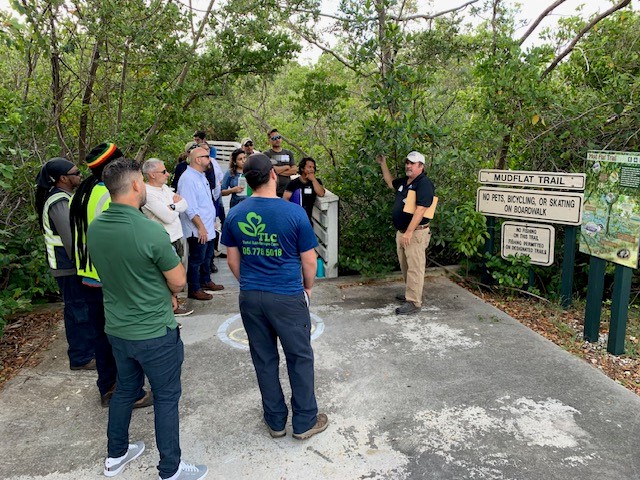Iconic signature of tropical coastlines
Visitors to Florida like to associate palm trees with the tropics, but for those who know them, mangroves are really the iconic coastal signature of the topics.

Worldwide, there are 50 species of mangrove trees. In Florida, we have 3 beautiful species, red, black and white, that span as far north as St. Augustine on the east and Cedar Key on the west. They can’t survive where it freezes.
Mangroves make the coast – literally.
They knit the coastline together with their roots, holding it together and protecting the coast from erosion.
“Mangroves are one of Florida’s true natives. They thrive in salty environments because they can obtain freshwater from saltwater. Some secrete excess salt through their leaves, while others block absorption of salt at their roots.
Florida’s estimated 600,000 acres of mangrove forests contribute to the overall health of the state’s southern coastal zone and beyond. This ecosystem traps and cycles various organic materials, chemical elements and important nutrients. Mangrove roots act not only as physical traps but provide attachment surfaces for various marine organisms. Many of these attached organisms filter water through their bodies and, in turn, trap and cycle nutrients.
The relationship between mangroves and their associated marine life cannot be overemphasized. Mangroves provide protected nursery areas for fishes, crustaceans and shellfish. They also provide food for a multitude of marine species such as snook, snapper, tarpon, jack, sheepshead, red drum, oyster and shrimp. Florida’s important recreational and commercial fisheries would drastically decline without healthy mangrove forests.
Many animals find shelter either in the roots or branches of mangroves. Mangrove branches are rookeries, or nesting areas, for beautiful coastal birds such as brown pelicans and roseate spoonbills.” – Florida Department of Environmental Protection
Mangroves are essential for our coastal ecosystem.
Mangroves both stabilize, protect and nourish our coastlines. That is why their removal and pruning are highly regulated by the state. In 1996 the State of Florida enacted the Mangrove Trimming and Preservation Act.
If you own property that has mangroves, please be aware that you can not remove them or alter them except by special exemptions and pruning practices. If you remove or abuse them in any way, you can be severely fined. (I highly encourage you to read through the resources listed at the end of this article.)
Although homeowners may prune their own as long as they follow the guidelines set by the FDEP, Mangrove pruning is best left to ISA Certified Arborists, or Professional Mangrove Trimmers (PMT). If you want to see mangroves up close and personal, visit the Anne Kolb Nature Center in Hollywood. There, you can walk on a boardwalk through a magnificent mangrove forest, and see them in action.
Mangroves are nothing short of miraculous.
What other tree can live completely in salt water, stabilize the coastline, protect water quality, reduce coastal flooding, provide habitat for fish, birds and other wildlife, contribute 7.6 billion annually to the economy of Florida and create over 100,000 jobs?
I dare you to find one.
Important resources:
Homeowner Guide to Pruning Mangroves
Florida Department of Environmental Protection
Trimming Mangroves Best Management Practices
Mangrove Pruning and Preservation Act

 7
7
